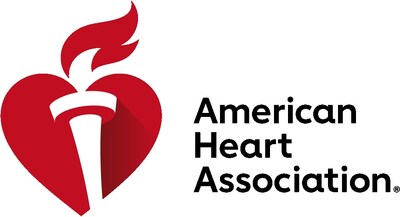Cardiac arrests where we live, learn, and play - Is North Texas prepared?
The American Heart Association says learning CPR during American Heart Month could help save the 23,000 children who experience sudden cardiac arrest each year, creating a Nation of Lifesavers
DALLAS, Feb. 4, 2025 /PRNewswire/ -- This February, during American Heart Month, the American Heart Association team in North Texas is calling on all families to learn the lifesaving skill of CPR. With more than 350,000 people experiencing cardiac arrests outside of hospitals each year, and a survival rate of only 10%, the need for widespread CPR knowledge is critical. Nearly 70% of these cardiac arrests occur at home, meaning the life you save could be that of a loved one.
Over 23,000 children experience cardiac arrest annually, with nearly 40% of these incidents related to sports and 20% occurring in infants. By empowering parents, teachers, and coaches with CPR skills, the Association aims to ensure every child has the best chance of survival in a cardiac emergency.
"The truth is, if you are called to respond in a cardiac emergency, being prepared to step in with CPR may save the life of someone you love, even a child," said Jill Griffiths, Region Senior Vice President, Development & Community Health, North Texas. "It's up to all of us to make sure that our families, students, and athletes are safe when it matters most."
How to Become a Lifesaver
Joining the Nation of Lifesavers, an American Heart Association initiative focused on doubling the survival rate of cardiac arrest by 2030, is easier than ever with many CPR learning options available to communities in Dallas-Fort Worth.
In North Texas, future lifesavers can:
- Take an online CPR course
- Learn and practice with a CPR Anytime Kit
- Watch a 60-second video to learn Hands-Only CPR
- Find a Heartsaver™ certification course near them or
- Find an upcoming CPR demonstration near them - the American Heart Association will be giving Hands-Only CPR demonstrations at the Fort Worth Stock Show and Rodeo in the Watt Arena on Feb. 5 and 6 at 9 a.m. or Feb. 7 at 1 p.m. near the cattle barn and on Feb. 8 in the Coliseum at 1 p.m.
There are three main types of CPR: Traditional, Child and Infant and Hands-Only.
- Traditional CPR is the method that combines chest compressions 2 inches in depth at the rate of 100-120 beats per minute with two breaths.
- Infant and Child CPR is similar to traditional CPR but has some key differences. Child CPR is performed with chest compressions at the depth of 2 inches with one or two hands, followed by two breaths. Infant CPR is performed with chest compressions at the dept of 1-1/2 inches with two fingers, followed by two breaths and repeat.
- Hands-Only CPR is chest compression-only CPR for adults and teens. It has been shown to be equally effective as traditional CPR in the first few minutes of emergency response. The two steps to save a life with Hands-Only CPR are to call 911, then push hard and fast in the center of the chest until help arrives.
If performed immediately, CPR can double or even triple a cardiac arrest victim's chance of survival. Yet, 65% of Americans say they would be afraid to step in and help in an emergency. The goal of the Association's Nation of Lifesavers initiative is to turn bystanders into lifesavers so that in the face of a cardiac emergency anyone, anywhere is prepared and empowered to become a vital link in the chain of survival and provide CPR. By 2030, the American Heart Association has pledged to double the cardiac arrest survival rate from just 10% to 20%.
"When parents and other people we look up to like teachers and coaches commit to learning CPR, it creates a culture where awareness is the norm instead of the exception," said Griffiths. "We often think about February as a time to buy flowers and chocolates in heart-shaped boxes. But, even more important than making that dinner reservation is scheduling time to learn CPR. It can be as simple as watching a 90-second video, but it could be the difference between life and death for someone you love."
For more information on how to join the Nation of Lifesavers during American Heart Month this February, visit heart.org/nation.
Additional Resources:
Downloadable B-roll, photos and infographics are available on the right column of this release link.
- Bystander CPR | Bystander CPR Infographic (PDF)
- Hands-Only CPR Resources
- Hands-Only CPR vs CPR with Breaths
- Women and CPR
- Cardiac Arrest vs. Heart Attack
- Take 90 seconds to learn how to save a life at www.heart.org/HandsOnlyCPR.
About the American Heart Association
The American Heart Association is a relentless force for a world of longer, healthier lives. We are dedicated to ensuring equitable health in all communities. Through collaboration with numerous organizations, and powered by millions of volunteers, we fund innovative research, advocate for the public's health and share lifesaving resources. The Dallas-based organization has been a leading source of health information for a century. During 2024 - our Centennial year - we celebrated our rich 100-year history and accomplishments. As we forge ahead into our second century of bold discovery and impact, our vision is to advance health and hope for everyone, everywhere. Connect with us on heart.org, Facebook, X or by calling 1-800-AHA-USA1.
For Media Inquiries:
Name: Lindsey Lyons Jones
Email: Lindsey.LyonsJones@Heart.org
Phone: 214-441-4114
Public Inquiries: 1-800-AHA-USA1 (242-8721)
heart.org andstroke.org
![]() View original content to download multimedia:https://www.prnewswire.com/news-releases/cardiac-arrests-where-we-live-learn-and-play--is-north-texas-prepared-302367660.html
View original content to download multimedia:https://www.prnewswire.com/news-releases/cardiac-arrests-where-we-live-learn-and-play--is-north-texas-prepared-302367660.html
SOURCE American Heart Association



